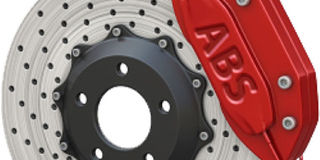Is it possible to remove the ABS from my harrier?

Hi Paul,
I was reading one of your articles about brake fluid and the brake system. I realised that my Toyota Harrier brake system seems to rumble violently when I brake even slightly on a hard tarmacked surface. The ABS light displays on the dashboard all the time. My mechanic cannot figure it out and says I should ignore it or remove it. What is your opinion?
Musinguzi
Hello Musinguzi, the ABS fault light displays when there is a fault with the Anti-locking brake system. Whilst your brakes still work despite the faulty ABS that does not mean you should ignore the fault or treat the ABS as an optional feature you can remove.
ABS is a safety feature incorporated in most post 1995 vehicle brake systems. ABS prevents wheel lockup when you brake suddenly on a wet or slippery surface in order to avoid skidding and loss of control.
The ABS is a hydro electrical system which monitors the car wheel speed using wheel hub fitted sensors. This information is processed by the ABS computer and shared with other computers in the engine, gearbox for synchronisation of the engine and safety systems.
The ABS modulater delivers brake fluid to the brake calliper system in a pulsating motion, felt in the brake pedal, to prevent wheel lock. An ABS system will fail if there is a breakdown of its electrical or hydro mechanical components.
In the event that the ABS system fails the manual brake system will limp on and allow you to brake. However when you brake on a dry surface the faulty ABS system may prematurely kick in. This can cause a violent judder which may reduce your ability to drive.
You need to find a mechanic with computer diagnosis to pinpoint the cause of ABS failure. Repair will be easy if you identify cause of breakdown.
Hi Paul, I am based in Kabale and I need your advice. When driving my Toyota G Touring lately I have noticed that it does not have power. This car has 250,000 kms. What could be the problem? Mark.
Hello Mark, your car’s high mileage suggests that you need to examine serviceable components which may be overdue for replacement. Start with the engine fuel filter.
It’s located in the engine bay. Often it’s ignored by some technicians. Like all serviceable components it has a lifespan of about 100,000kms if it’s a petrol engine. The clogged fuel filter will reduce fuel delivery pressure as well as cause backpressure which damages the fuel pump.
Ask your mechanic to clean the throttle valve and idle air control valve. I am assuming that your engine spark plugs and air filter service is up to date. A combination of fuel and spark quality are crucial for good combustion and engine power.
Hi Paul, I have had a strong argument with one of my friends about fuel economy and the use of air conditioning when driving. My friend argues that not using air conditioning wastes more fuel than when you are using it. I totally disagree. Please join the discussion.
Jacob.
Hello Jacob, you and your friend are both right - up to a point. When you use your Air conditioning (AC) while driving it increases your fuel consumption because running the system creates an extra load and energy demand to the engine.
Of course its a trade off between comfort and fuel economy and the choice depends on the different driver and passenger needs. Opening your car windows as an alternative to the use of AC helps improve fuel economy up to a point.
When driving at speeds exceeding 50 km/ hour strong road winds entering your car will create more wind resistance and increase the load your car carries. This condition will subsequently increase the engine energy demand and fuel consumption. This is where your friend has a point. To reduce the effect of wind on car load you may need to open the windows slightly when you drive fast.




